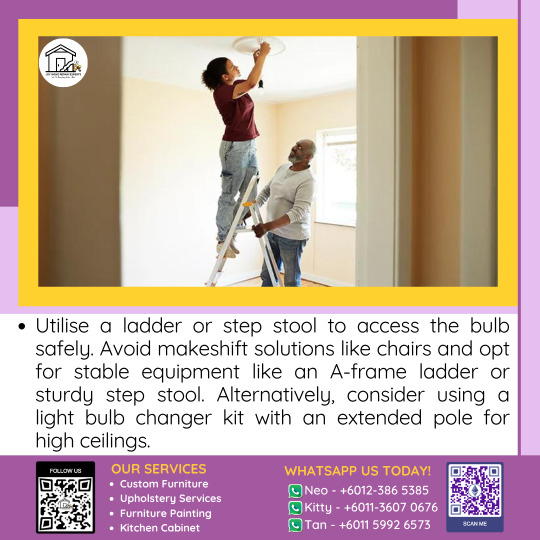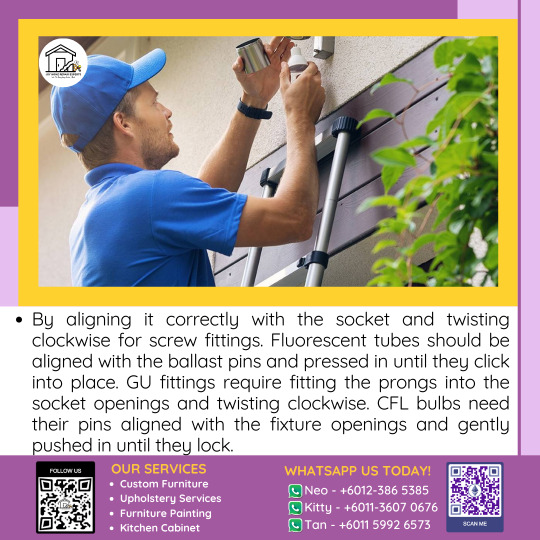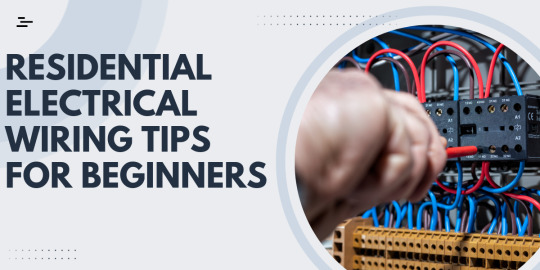#DIYElectrical
Text
Choosing the Right Tools for DIY Electrical Repairs and Upgrades

Beginning a DIY electrical project is thrilling, but have you ever felt frustration when things go wrong due to the wrong tools? I have. That's why I'm here to guide you. Safety is paramount, and it all begins with the right tools. Let's dive into the essentials for successful DIY electrical repairs and upgrades.
Essential Tools for Every DIY Electrician's Toolbox
Must-haves
Voltage Tester: This tool is your electrical guardian angel, ensuring circuits are dead before you proceed. Non-contact or contact, pen or multimeter – choose wisely based on your project's needs.
Wire Strippers/Cutters: Master safe stripping techniques, matching them with the right gauge. Precision matters, and a smooth wire-stripping dance avoids potential hazards.
Screwdrivers (Various Sizes and Types): Phillips, flathead, Torx – understand the language of screws. Each type has a unique purpose, and having a variety on hand ensures you're ready for any fastening challenge.
Pliers (Needle Nose, Lineman's): Grip and cut wires like a pro. Different pliers serve distinct functions, making your toolbox versatile and your projects seamless.
Flashlight: Shed light on the darkest corners of your electrical endeavours. Consider a headlamp for hands-free brilliance when juggling wires becomes an art form.
Level: Achieve precision in every installation – switches, outlets, and fixtures. A level ensures your upgrades are not only functional but also aesthetically pleasing.
Additional helpful tools
Circuit Breaker Finder: Quickly locate hidden breakers, a time-saving device that eliminates the guesswork.
Utility Knife: A versatile companion for stripping cables, scoring conduits, and other general purposes. This handy tool is a silent hero in your toolkit.
Wire Caps/Connectors: Choose wisely based on wire gauge and material. These little connectors play a crucial role in keeping your connections secure.
Electrical Tape: A multitasking marvel – insulation, marking, and serving various electrical purposes. Don't underestimate the power of a good electrical tape.
Safety Glasses and Gloves: Protect yourself from potential hazards, ensuring your DIY journey is injury-free.
Considerations for Choosing Quality Tools
When it comes to tools, quality should be your steadfast companion:
Safety Features: Prioritize tools with insulated handles, non-conductive materials, and shock protection. Your safety is non-negotiable.
Quality vs. Cost: Invest wisely. Durable tools from reputable brands might cost a bit more, but they pay dividends in the long run.
Functionality: Seek multi-function tools or sets for versatility. A tool that can wear multiple hats is a valuable asset in any DIY project.
Ergonomics: Comfortable grip and design prevent fatigue during prolonged usage. Your hands deserve the best; choose tools that understand that.
Project-Specific Needs: Tailor your tool selection to the specifics of each project. For instance, consider a drywall saw for recessed lighting – a small adjustment that makes a big difference.
Safety First: Working with Electricity the Right Way
Before you embark on any electrical journey, follow these commandments:
Always turn off the power before starting any work.
Double-check and triple-check that the power is off.
Use proper voltage testers and safety gear.
Work within your skill level and know when to call a professional.
Follow local electrical codes and regulations.
Conclusion
Armed with the right tools, knowledge, and a safety-first mindset, your DIY electrical projects are destined for success. Electrical contractors stress the importance of using the right tools, not just for efficiency but, more crucially, for your safety.
So, whether you're a seasoned DIY enthusiast or a novice looking to enhance your home, let this guide be your beacon. Electrical services can be within your grasp with the right tools and a bit of know-how. Before any electrical task, familiarize yourself with What Electrical Work Can Be Done Without A License
#DIYElectrical#ToolboxEssentials#HomeSafety#ElectricalUpgrades#DIYProjects#SafetyFirst#ElectricalTools#DIYHomeImprovement#WiringWonders#HandymanTips#ToolTalk#HomeElectrical#DIYEnthusiast#EmpoweredDIY#SafetyGear#ElectricalKnowledge#PowerUpgrades#HomeRenovation#DIYGuides#HandyHacks
0 notes
Text
How To Change or Install A Light Bulb in Minutes
Changing a light bulb may seem simple, but with the growing diversity in the market, it's become more complex. From traditional incandescent bulbs to LED and smart bulbs, there's a variety of fittings and types to consider.
TOOLS:-
Gloves
Ladder or step stool (Optional)
Light bulb changing kit with extender pole (Optional)
Protective eyewear (Optional)
1. Turn Off the Power and Let the Bulb Cool
Before handling any electrical components, always ensure the power is switched off. Allow the bulb to cool down before attempting to touch it. Test the temperature by bringing the back of your hand close to the bulb.
2. Use a Ladder or Stool To Reach the Bulb
Utilise a ladder or step stool to access the bulb safely. Avoid makeshift solutions like chairs and opt for stable equipment like an A-frame ladder or sturdy step stool. Alternatively, consider using a light bulb changer kit with an extended pole for high ceilings.
3. Remove the bulb
Unscrew the bulb according to its fitting type. For screw fittings, twist the bulb counterclockwise until it loosens. Fluorescent tubes require a gentle twist while supporting both hands. GU fittings in halogen or LED lamps need careful pressure and rotation counterclockwise. Complex fluorescent bulbs can be removed by grasping the base and gently pulling until it releases.
4. Install the new bulb
By aligning it correctly with the socket and twisting clockwise for screw fittings. Fluorescent tubes should be aligned with the ballast pins and pressed in until they click into place. GU fittings require fitting the prongs into the socket openings and twisting clockwise. CFL bulbs need their pins aligned with the fixture openings and gently pushed in until they lock.
5. Confirm the bulb works
After replacing the bulb, switch the fuse back on and test the bulb to confirm it's functioning correctly before completing the cleanup process.
#joyhomerepairexperts#BulbSafety #LightingMaintenance #DIYLighting #HomeSafety #ElectricalSafety #LightingTips #SafetyFirst #HomeMaintenance #BulbReplacement #DIYElectrics #CraftyFixes #EcoFriendlyRepairs #FixItYourself #RepairWithEase







0 notes
Photo

Solar system #solarsystem #homesolarsystem #homedecor #homedecoration #diyhomeprojects #electrician #diyelectrical #electricity #homeinspo #homedesign https://www.instagram.com/p/CK0gTbqFOVZ/?igshid=vrxeftu49acc
#solarsystem#homesolarsystem#homedecor#homedecoration#diyhomeprojects#electrician#diyelectrical#electricity#homeinspo#homedesign
0 notes
Photo

Learn how to wire a combo switch/outlet with constant power to the outlet in this short how-to video - https://homeadditionplus.com/dev/electrical/wire-switch-outlet-combo-video/ . . #electrical #homewiring #electrician #diyelectrical #electricalwiring #Leviton #electricwiring https://www.instagram.com/p/BvOqkVgFyNS/?utm_source=ig_tumblr_share&igshid=1x9ihnbf1bqei
0 notes
Photo

Direct Drive Motor Board 1. Seven layers Canadia Maple 2. Slim Body 3. Fashion Board.Shape 4. Higher Efficient Battery #diyelectricskateboard#diyelectricskateboards#diyelectricskate #diyelectrics#diyelectriclongboard #diyelectricsk8#diyelectricskateboardmalta#diyelectricskateboarding #vesc#diylongboard #diyesk8#diyesk8builders #diyeskate#diyeskateboard #diyeboard#diyeboards #diyesküvő#diyelectricvehicle #diyboard#diyskateboard #diyskateboards#diyskateboarding#diyelectriclongboards #diyelectric #diyboard #diyeskate #diyelectricskateboardmalta #electricskate #eskatemalta #electriclongboard #skateboardbuilder #electriccomuting #electriccomutingmalta #electricskateboards #electricskate #electricboard #eskate #electriclongboards #electriclongboarding #electricskateboarding #inventor #startuplife #future #eco #electromobility https://www.instagram.com/p/B4hbMGcpuv8/?igshid=1icigjvxea4fr
#diyelectricskateboard#diyelectricskateboards#diyelectricskate#diyelectrics#diyelectriclongboard#diyelectricsk8#diyelectricskateboardmalta#diyelectricskateboarding#vesc#diylongboard#diyesk8#diyesk8builders#diyeskate#diyeskateboard#diyeboard#diyeboards#diyesküvő#diyelectricvehicle#diyboard#diyskateboard#diyskateboards#diyskateboarding#diyelectriclongboards#diyelectric#electricskate#eskatemalta#electriclongboard#skateboardbuilder#electriccomuting#electriccomutingmalta
0 notes
Video
Out to replace an outlet - for dummies. #electrical #homeimprovement #stupidideas #outlets #diyelectrical #diyhomeprojects (at Fort Worth, Texas) https://www.instagram.com/p/CE2lrYDBDUa/?igshid=l38j6effaon1
0 notes
Video
This misguided person genuinely wants to take advantage of your isolated and idle condition. it's conch shell with another all-in-one-of-a-kind product for you. On Exercise-Fueled Sports Bar, It's CAREoke Capture #3 by Pastel Fractal. this product comes with not just the mission statements of chicago sports organizations prompted on 2 nice high mounted karaoke screens, but also a plethora of flow sports equipment including: tennis, hoop, skateboard... #sportsarentcancelled #musicandsports #experimentalmerch #nowheretodrink #chicagosportsbar #barsareessential #localbusinessesworkingtogether #bicycleelectricgenerator #diyelectricity #businessasusualisnotanoption #infomercials #jimbakker (at Chicago Sports Bar and Grill) https://www.instagram.com/p/CAfxfiUl0zL/?igshid=1vgnj7kdirojb
#3#sportsarentcancelled#musicandsports#experimentalmerch#nowheretodrink#chicagosportsbar#barsareessential#localbusinessesworkingtogether#bicycleelectricgenerator#diyelectricity#businessasusualisnotanoption#infomercials#jimbakker
0 notes
Photo

Let there be light! #diyelectrical #thehainestead #homebuilding
0 notes
Text
Stay Safe: Identifying and Preventing Electrical Hazards at Home

Identifying Electrical Hazards
Electrical hazards can pose serious risks at home. It's essential to identify these potential dangers to keep your family safe:
Damaged Outlets and Cords: Inspect outlets and cords for signs of wear or damage. Replace them if needed.
Overloaded Outlets: Avoid overloading outlets with too many devices or appliances. Use power strips with surge protection if necessary.
Water Exposure: Keep electrical appliances away from water sources to prevent shocks or short circuits.
Faulty Appliances: Regularly check your appliances for any malfunctions or unusual behaviour. Repair or replace them as needed.
Improper Grounding: Ensure your electrical systems are properly grounded to reduce the risk of electrical fires.
Preventing Electrical Hazards
Prevention is key to electrical safety. Follow these tips to reduce the risk of electrical accidents:
Inspect Wiring and Cords Regularly: Regular inspections can help you identify potential hazards before they become dangerous.
Use Ground Fault Circuit Interrupters (GFCIs): Install GFCIs in areas prone to water exposure, like kitchens and bathrooms, to cut off power in case of a fault quickly.
Avoid Using Extension Cords: Limit the use of extension cords, as they can overheat and become hazards themselves. Opt for additional outlets when necessary.
Don't Overload Outlets: Spread your electrical devices across different outlets to prevent overloading and overheating.
Keep Electrical Appliances Away from Water: Water and electricity don't mix. Be cautious when using electrical devices near water sources.
Unplug Appliances When Not in Use: Save energy and reduce the risk of electrical fires by unplugging devices when they're not in use.
Know the Location of Your Circuit Breaker: Familiarize yourself with your circuit breaker's location if you need to shut off power in an emergency.
Have an electrical safety inspection of Your Home's Wiring Regularly: Periodic inspections by a qualified electrician can ensure your home's electrical system is safe and up to code.
Additional Tips
Here are some other tips to enhance electrical safety:
Teach Children About Electrical Safety: Educate your children about the dangers of electricity and the importance of safety precautions.
Be Aware of Your Surroundings: Pay attention to your surroundings and any potential hazards, like exposed wires or damaged outlets.
Don't Attempt Electrical Repairs Yourself: Electrical work should be left to professionals. Never attempt repairs if you're not trained.
Conclusion
Prioritizing electrical safety at home is crucial. By identifying and preventing electrical hazards, you can protect your family and property from potentially life-threatening incidents. Stay informed, be cautious, and remember that safety should always come first.
#ElectricalSafety#HomeSafety#SafetyFirst#PreventAccidents#ElectricitySafety#SafetyTips#StaySafe#HomeMaintenance#ElectricalAwareness#SafetyAwareness#FamilySafety#DIYElectrical#SafetyEducation#HomeImprovement#ElectricalHazards
0 notes
Text
Residential Electrical Wiring Tips for Beginners

Welcome to our guide on residential electrical wiring tips for beginners. Whether you're looking to tackle a simple electrical project or just want to understand the basics of electrical wiring in your home, this guide will provide you with the knowledge you need. At Total Power energy, we believe that safety and knowledge go hand in hand when it comes to electrical work.
Safety First
Before we delve into the technical aspects of residential electrical wiring, let's emphasize that safety should always be your top priority. Electrical work can be hazardous, and taking the necessary precautions is crucial. Ensure you have the following safety equipment on hand:
Safety goggles
Insulated gloves
Non-conductive footwear
Circuit tester
Fire extinguisher
Remember, if you ever feel unsure or uncomfortable, it's best to consult a professional electrical contractor in Seattle who specializes in electrical services. Your safety is not worth the risk.
Understanding Electrical Basics
To begin, let's demystify some electrical jargon. Understanding a few fundamental concepts can go a long way:
Voltage: Think of voltage as electrical pressure. It's the force that pushes electricity through wires.
Current: Current is the flow of electricity. Imagine it as the water flowing through a pipe.
Resistance: Resistance opposes the flow of current. It's like a narrowing in the pipe that restricts water flow.
Circuit Breakers and Fuses: These are your electrical safety net. They protect your home from electrical overloads.
Tools and Equipment
Every DIY electrical enthusiast needs the right tools. Here's a list of essential equipment:
Screwdrivers (flathead and Phillips)
Wire strippers
Wire nuts
Electrical tape
Wire connectors
Voltage tester
Wire cutters
Fish tape (for running wires through walls)
For more complex projects, consider investing in a multimeter and a wire tracer. These tools can be invaluable when troubleshooting.
Planning Your Wiring Project
Planning is the key to a successful electrical wiring project. Before you start, create a wiring diagram that outlines your project. Identify all circuits and outlets in your home. This diagram will serve as your roadmap and help prevent mistakes.
Wiring Tips
Now, let's get down to business. Here are some essential wiring tips for beginners:
Turn Off the Power: Always turn off the power to the area you're working on at the circuit breaker or fuse box. Use a voltage tester to double-check that the power is off.
Connect Wires Properly: When connecting wires, follow color-coded conventions (usually black for hot, white for neutral, green or bare for ground). Use wire connectors and secure them with electrical tape.
Secure Wires and Cables: Use cable staples or straps to secure wires to studs and joists. Keep wires away from sharp edges and hot surfaces.
Label Everything: Label switches, outlets, and the circuit breaker panel to avoid confusion in the future.
Troubleshooting Common Issues
Despite your best efforts, issues can arise. Here are some common problems and their solutions:
Tripped Circuit Breaker: If a circuit trips frequently, it's likely overloaded. Reduce the load or consult an electrical contractor for an upgrade.
Flickering Lights: Loose bulbs or connections can cause flickering lights. Tighten connections or replace faulty bulbs.
Dead Outlets: If an outlet doesn't work, check the circuit breaker and reset it. If that doesn't work, consult an electrical services professional.
When to Seek Professional Help
While DIY electrical work can be rewarding, there are instances when it's best to leave it to the experts. Seek professional help when:
Dealing with major electrical upgrades or installations.
Diagnosing complex electrical issues.
You're unsure about your abilities or the safety of the project.
Conclusion
In conclusion, residential electrical wiring for beginners doesn't have to be intimidating. Armed with the right knowledge, tools, and safety precautions, you can tackle small projects with confidence. However, always remember that your safety is paramount, and for anything beyond basic tasks, it's wise to consult experienced electrical contractors who offer electrical installation and electrical services.
#ElectricalWiring#DIYElectrical#ElectricalSafety#WiringBasics#HomeImprovement#ElectricalTools#ElectricalDiagram#TroubleshootingElectrical#ElectricalContractors#ResidentialElectrical#ElectricalServices#WiringProjects#SafetyFirst#ElectricalTips#WiringGuide#ElectricalBeginners#HomeElectrical#ElectricalUpgrades#ElectricalInstallation#ProfessionalElectricians
1 note
·
View note
Photo

ET 13: INDUSTRIAL MULTIPLE OUTLET SOCKET WE CREATED THIS CHANNEL FOR PEOPLE WANT TO KNOW ABOUT CONSTRUCTION WORK AND INTERIOR WORK. Follow 👉 @team_lceted for more post related to #constructions Tag your #civil_engineers friends . . __________ Follow 👉 @team_lceted Follow 👉 @team_lceted Follow 👉 @team_lceted __________ . . . _________ #eletricalengineering #diyelectrical #electricalengineer #civilengineering #civilengineer #civilengineers #civilengineeringstudent #superstructure #interiordesign #civilengineeringworld #civilengineeringproject #civilengineerandyou #tiktok #civilengineerideas #civilengineerstudents #civilengineerstructures #civilengineerphotos #civilengineeringstudents #civilengineershoudknow #partitionboard #structure #CivilEngineerWithDreads #civilengineeringvideo #civilengineeringlife #architecture #civilengineeringexplore #civilengineerstudent #civilengineeringdiscoveries https://www.instagram.com/p/CCD8qLVIyLf/?igshid=1vhxvndcjlgl8
#constructions#civil_engineers#eletricalengineering#diyelectrical#electricalengineer#civilengineering#civilengineer#civilengineers#civilengineeringstudent#superstructure#interiordesign#civilengineeringworld#civilengineeringproject#civilengineerandyou#tiktok#civilengineerideas#civilengineerstudents#civilengineerstructures#civilengineerphotos#civilengineeringstudents#civilengineershoudknow#partitionboard#structure#civilengineerwithdreads#civilengineeringvideo#civilengineeringlife#architecture#civilengineeringexplore#civilengineerstudent#civilengineeringdiscoveries
0 notes
Link
HOW TO CHOOSE RIGHT MCB BREAKER CURRENT RATING
A miniature circuit breaker (MCB) automatically switches off the electrical circuit during an abnormal condition of the network means in overload condition as well as faulty condition. Nowadays we use an MCB in low voltage electrical network instead of a fuse.
0 notes
Photo

ET 10: CURRENT AFFECT ON OUR BODY #civilengineering #civil_engineering #lceted #siteengineer #siteengineering #civilengineers #sitesupervisor #civilengineer #concreteconstruction #constructionlaborer #constructionlife #construction #civilengineeringstudents #diyelectrical #electricaltips https://www.instagram.com/p/B-XMdWOlDet/?igshid=1wyldpixbvpy8
#civilengineering#civil_engineering#lceted#siteengineer#siteengineering#civilengineers#sitesupervisor#civilengineer#concreteconstruction#constructionlaborer#constructionlife#construction#civilengineeringstudents#diyelectrical#electricaltips
0 notes
Photo

ET 09: CURRENT AFFECT ON OUR BODY #civilengineering #civil_engineering #lceted #siteengineer #siteengineering #civilengineers #sitesupervisor #civilengineer #concreteconstruction #constructionlaborer #constructionlife #construction #civilengineeringstudents #diyelectrical #electricaltips https://www.instagram.com/p/B-R6_2gFlNs/?igshid=1coq56k7h7jbj
#civilengineering#civil_engineering#lceted#siteengineer#siteengineering#civilengineers#sitesupervisor#civilengineer#concreteconstruction#constructionlaborer#constructionlife#construction#civilengineeringstudents#diyelectrical#electricaltips
0 notes
Photo

ET 08: SIZES AVAILABLE IN ELECTRICAL RACEWAY? #civilengineering #civil_engineering #lceted #siteengineer #siteengineering #civilengineers #sitesupervisor #civilengineeringdiscoveries #civilengineer #concreteconstruction #constructionlaborer #constructionlife #construction #diyelectrical #electricalengineering https://www.instagram.com/p/B-LhqncpFp5/?igshid=4o6gs20jtxjw
#civilengineering#civil_engineering#lceted#siteengineer#siteengineering#civilengineers#sitesupervisor#civilengineeringdiscoveries#civilengineer#concreteconstruction#constructionlaborer#constructionlife#construction#diyelectrical#electricalengineering
0 notes
Photo

ET 05 KELVIN & ITS APPLICATIONS #civilengineering #civil_engineering #lceted #civilengineerblog #civilengineeringstudents #siteengineer #siteengineering #civilengineers #sitesupervisor #concreteconstruction #civilengineeringdiscoveries #civilengineer #diyelectrical #electricalengineering #homeelectrical #interiorelectricalwork https://www.instagram.com/p/B9t9z-6FNjS/?igshid=1509pyt8nuuja
#civilengineering#civil_engineering#lceted#civilengineerblog#civilengineeringstudents#siteengineer#siteengineering#civilengineers#sitesupervisor#concreteconstruction#civilengineeringdiscoveries#civilengineer#diyelectrical#electricalengineering#homeelectrical#interiorelectricalwork
0 notes